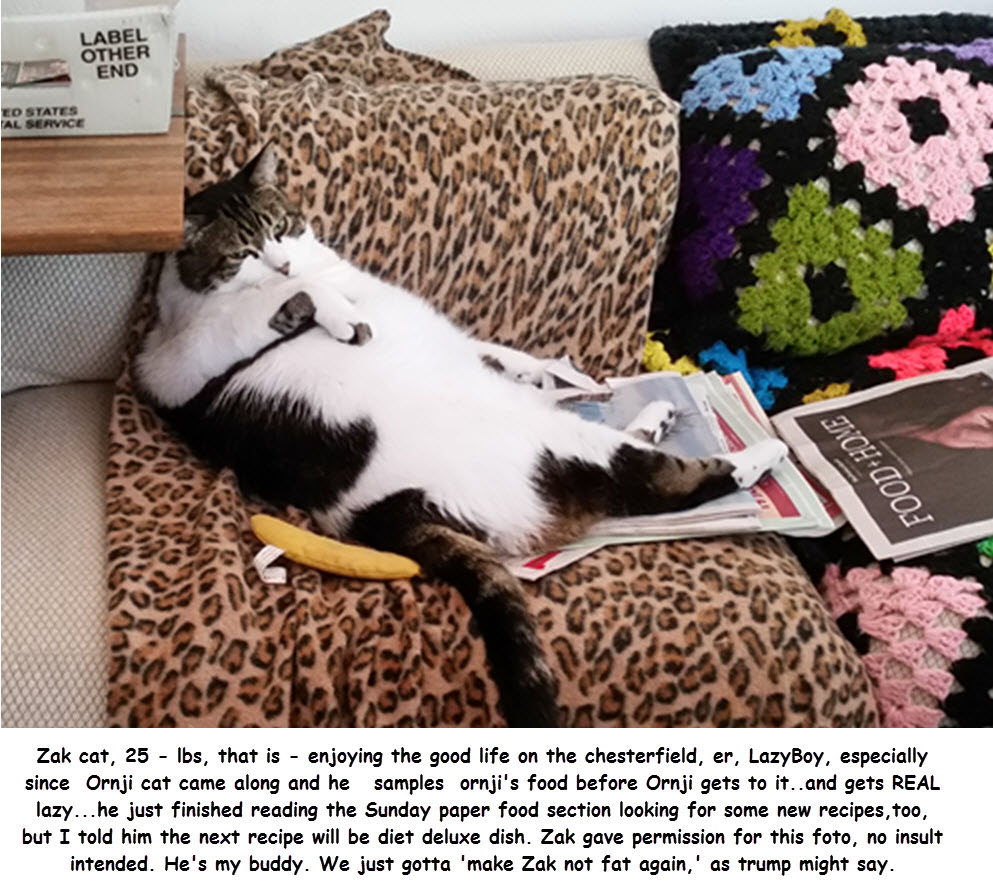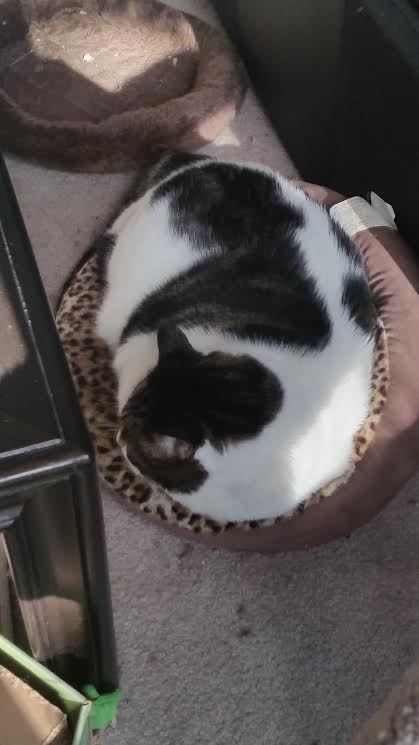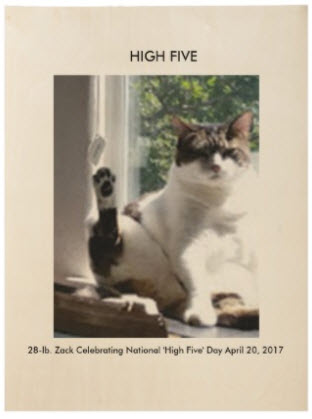After Zack was found near death and he got over-fed ; ever since he has had a problem losing the weight, which has been many years now. With another cat in the house it was also difficult to keep the other’s food away from Zack but we’ve learned to take away any remaining food as soon as the cat stops eating. Zack has finally lost a few pounds, down from 28 to 25, so there is hope. You may have experienced similar problems. Even our vet has had problems getting her cat to lose weight. It takes a well disciplined effort for time. These tips may help
Weight Loss Diets
Make it easier on yourself now that Hill’s Science Diet has released ‘Metabolic’ diet, a prescription diet that is supposed to have all the necessary vitamins and minerals a cat needs while having his or her food intake limited. And Royal Canin has just come out with their ‘Calorie Control’ for a variety to give your cat, available at your larger pet stores such as Petsmart.
Getting an obese cat to lose weight needs to be done gradually… no crash diets allowed! Cats have a unique metabolic response to fasting and whenever a feline’s food intake is rapidly and markedly depressed, a serious and potentially fatal disorder can occur called Hepatic Lipidosis.
One of the reasons for the success of a high protein diet for feline weight reduction is the importance of an amino acid called Carnitine. Carnitine is present in good quantities in muscle tissues, but found in miniscule amounts in vegetable matter. This amino acid plays an essential role in the uptake of stored fat reserves and conversion of fat by the liver back to into glucose. The ability to mobilize fat tissue to be used as glucose for energy (and for subsequent weight loss to be accomplished) requires carnitine in the process. Supplementing a cat’s diet with L-Carnitine in amounts approximating 250 to 500 mg per cat per day will aid in mobilizing fat into glucose and will improve the health of a cat that is on a weight loss program.
How to Put a Cat on a Diet
First, your veterinarian needs to do a thorough physical exam, blood chemistry profile including Thyroid hormone evaluation, and record an accurate weight for the cat. Then you should gradually… over a period of three to four weeks… start putting your cat on the suggested feline weight-loss diet by adding greater and greater proportions of the suggested food. Mix the new diet with the old, slowly decreasing the percentage of the old diet and increasing the percentage of the new one.
Pay close attention to how much the cat is eating every day. When the cat acclimates to the improved, high protein diet (fed in small amounts frequently during the day), reweigh the cat at four-week intervals. If there is no weight loss at all, or even some weight gain, the amount of food you are allowing is simply too much.
You may be thinking in human-sized portions, not feline. Remember the mouse. Every three to four weeks reweigh your cat on the same scale each time so that accurate weight measurements are done. A fifteen-pound cat should not lose more than half a pound in four weeks. (Remember the Hepatic Lipidosis problem!)
Always be observant and report to your veterinarian any time a cat stops eating for two or more days. (That’s one of the subtle problems with the “free choice” method of feeding. We often do not notice that the cat’s food dish is still full until the cat is well into a fasting mode. When cats are sick the first clinical sign is often a loss of appetite; so a non-interactive, free choice feeding protocol provides less information to us than an interactive portion controlled feeding method.) Any cat that hasn’t eaten in three days is in trouble! Seven days of fasting actually impacts the cat’s immune system.
Once you have established a feeding plan that induces gradual weight loss over a period of months the cat will reach a point where weight maintenance occurs. At this optimal weight the cat should not “look fat” nor “look skinny”. You’d be surprised how much more active and alert the cat will be at an optimum weight. You have successfully avoided the probability of diabetes, arthritis and hepatic Lipidosis. Your cat will probably live a few extra years and have a much better quality of life … and that will make you happy, too!
To get a cat to lose weight, do the following after consulting with your veterinarian:
1. Have a thorough physical exam, lab tests, and accurate weigh recorded. Be sure to rule out hypothyroidism or other metabolic disorders.
2. Feed less food than you have been
3. Feed foods high in protein and fat and low in carbohydrate
4. Feed small portions at intervals (2x to 4x per day) rather than continuous free access/ free choice
5. Increase the cat’s activity/exercise by enriching the cat’s environment.
6. Reweigh the cat at three to four week intervals to assess your weight loss diet’s progress
7. Reconsider the total daily amount fed if weight gain or no weight loss is noted
8. Once the cat is at an idea weight, adjust the total amount fed so that the cat’s body weight remains stable.




